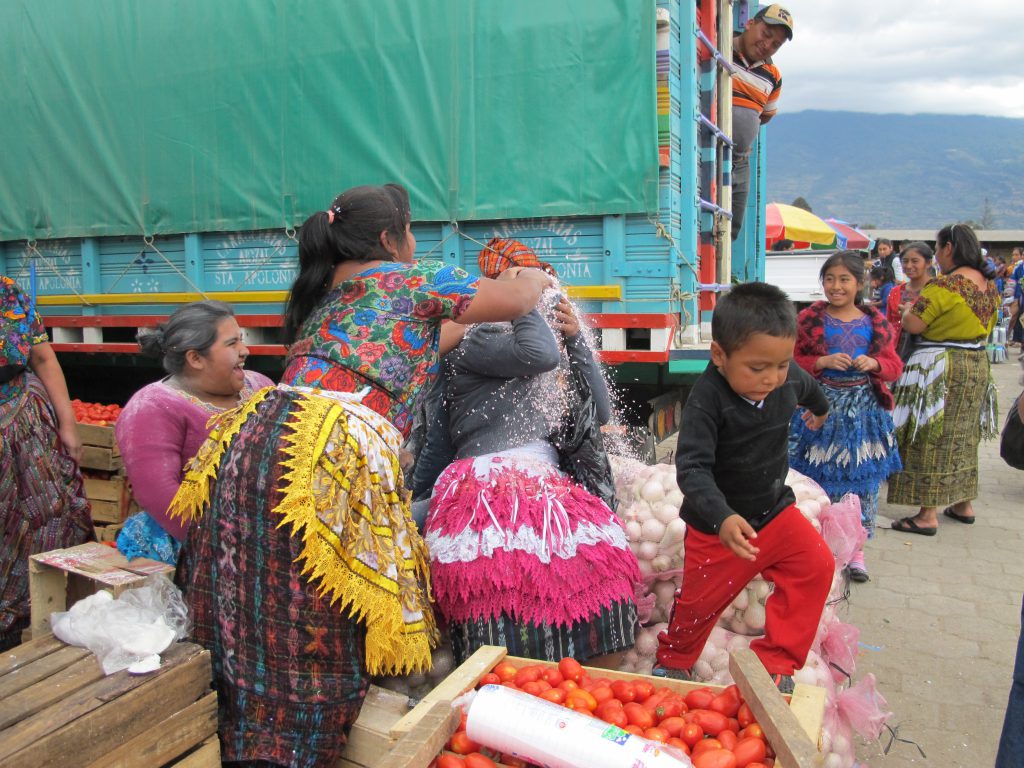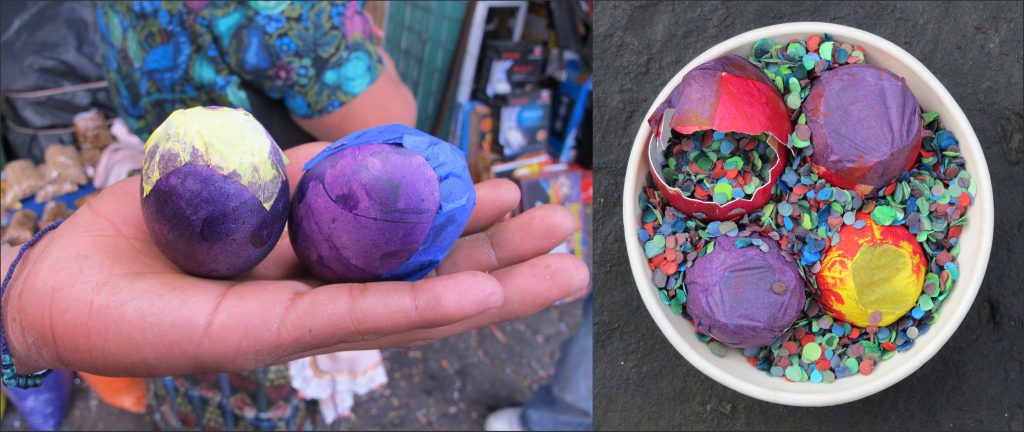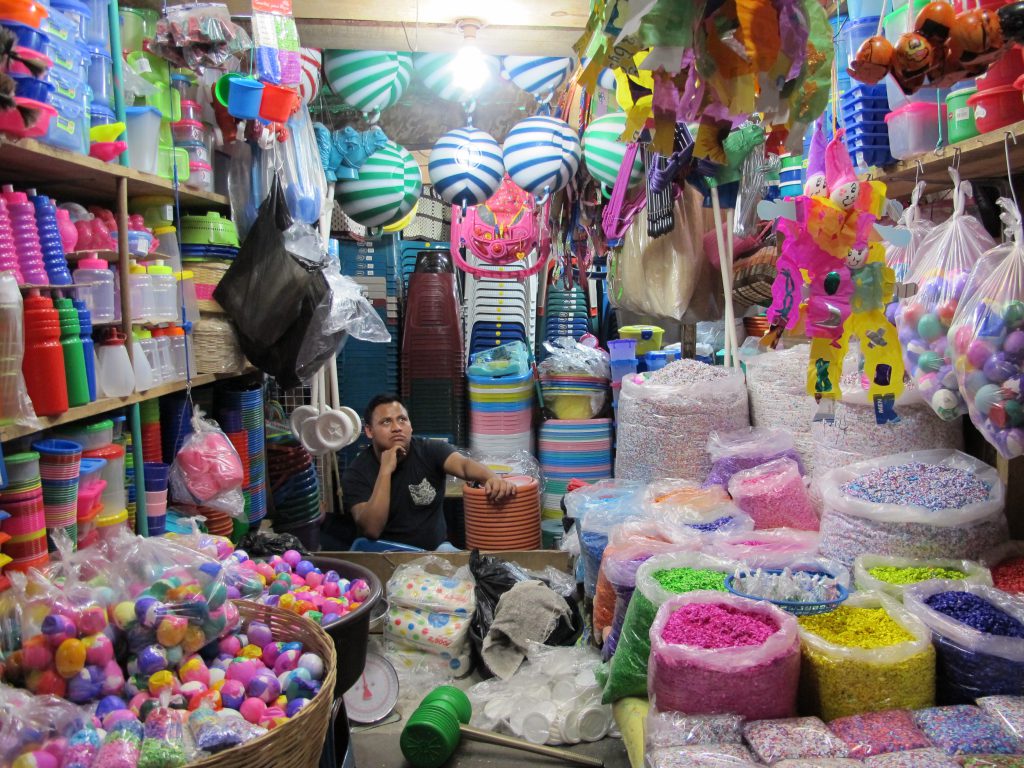On Fat Tuesday, Break an Egg Over Someone’s Head

Right now, families throughout the Americas are cheerfully stockpiling decorated eggshells for a fun-filled celebration that crosses international borders and transcends cultural boundaries.
Countless people around the world celebrate Shrove Tuesday, also known as Pancake Day, Mardi Gras, or Fat Tuesday. It marks the last day of feasting and celebration before Lent, the Christian season of prayer and fasting that stretches from Ash Wednesday (which falls on February 14 this year) to Easter. People in many nations will be eating pancakes, dancing down city streets in spectacular costumes, or feasting on meat, fish, fats, eggs, and milk—foods that traditionally would not have lasted through Lent without going bad. And some, especially in Latin American countries, will be cracking confetti-filled, brightly colored eggshells, known as cascarones, over the heads of friends, relatives, and strangers.
When I was in Guatemala last winter, everywhere I looked along the old cobblestone streets and in the markets there were piles of ready-made cascarones for sale, along with bags of brightly colored confetti (known as pica-pica, which translates as “itch-itch”).
People there carefully save their eggshells, cut off the tops, wash them out, paint them, fill them with flour and/or confetti, and seal them closed with brightly colored tissue paper. Some say that the making of cascarones is as much fun—and as important a tradition—as the cracking itself. With grandparents, parents, and children of all ages involved in the preparations, it is an entertaining way of linking generations and passing down cultural heritage.
The sale of these colorful eggshells is a profitable cottage industry for many families. From bustling cities to small villages, from small corner shops to large supermarkets, from narrow sidewalks to shady park benches, local vendors sell cascarones by the basket-load and plastic bagful.
One warm, sunny day in January, I watched a group of young Guatemalans in the market in Antigua, a world heritage site in the central highlands. As they smashed eggshells over each other—laughing while wiping a mixture of confetti and flour off their heads, faces, and clothes—one thing was clear: This egg-smashing tradition is not just about having a big party before embarking on the Lenten period of repentance, abstinence, and atonement. It is also a celebration of friendship, good fortune, and fun.
The exact origin of these delicate treasures is unclear. The basic concept seems to have originated in China, where eggshells filled with perfumed powder were given as gifts. These were purportedly brought to Italy by the traveler Marco Polo in the late 1200s, where they morphed into containers for liquid perfume, to be given as elegant gifts or broken over the head of a love interest.
It is often said that after spreading through Western Europe, cascarones were first brought to Mexico by Carlota, the wife of Emperor Maximilian, in the 1860s, but articles written decades before Carlota arrived in Mexico mention the presence of cascarones. And by 1854, according to a book called Sixty Years in Southern California, “The greatest compliment that a gentleman could pay a lady was to break one of these cascarones over her head, and often the compliment would be returned; the floor, at the termination of such festivities, being literally covered with the bits of paper and egg-shell.”
Regardless of how they reached the Western Hemisphere, cascarones eventually spread through Latin America and parts of the U.S. (particularly from Texas to California). At some point, they largely lost their connection with romance and expensive gifts and morphed into their current incarnation as confetti containers for merrymaking.
Today cascarones are part of a shared cultural and economic fabric that spans across borders and societies. Although popular during the pre-Lenten and Easter period, they have also become a part of birthdays, weddings, graduations, religious ceremonies, and festivals throughout the Americas.
Many people have adapted them to suit modern tastes or local traditions. Some folk artists make cascarones that look like dinosaurs, clowns, or comic book characters, to appeal to kids. Others use them to make political statements: Last year, a blogger in California enjoyed making and smashing images of Donald Trump. Some Yaqui Native Americans of Arizona have adopted cascarones into their culture, believing that the confetti that fills them “represents flowers and, through them, the grace of God.”
Just as music, food, and art can transcend ethnic, political, and geographic boundaries, fun-filled customs shared among cultures can also foster inclusiveness and good will. So this year on Shrove Tuesday—wherever you live, whatever language you speak—why not crack a cascarone over someone’s head to celebrate our shared humanity.



































